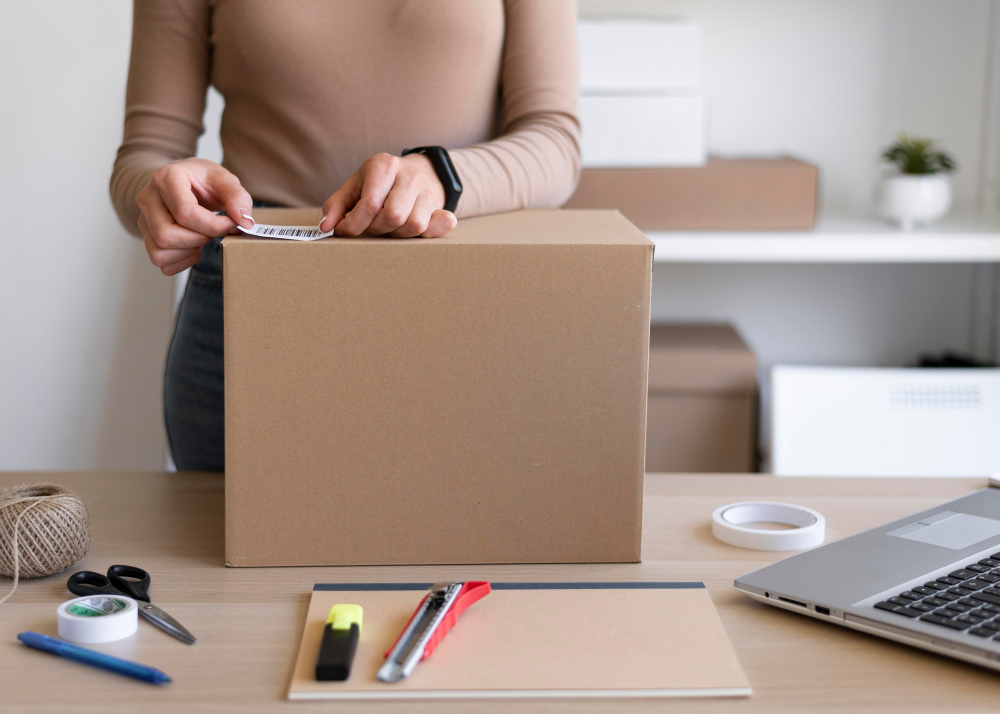Table Of Contents
- The Anatomy Of Packaging: Where Is There So Much Packaging Waste?
- Corrugated Cardboard:
- Plastic Films And Wraps:
- Bubble Wrap And Air Pillows:
- Paper Fillers And Tissue:
- Styrofoam (Expanded Polystyrene):
- Metal And Foil Components:
- Where It Ends Up: Understanding The Fate Of The Packaging Waste
- The Hidden Costs: A Major Impact Of Growing Packaging Waste
- What Can We Do To Reduce Packaging Waste?
- The Future Of Packaging Waste: Innovations In Packaging Materials Can Reduce The Impact
What’s Really Inside Your Packaging? A Breakdown of Packaging Waste
Last Updated on: May 23rd, 2025
The delivery person presses the doorbell. You already have an SMS or WhatsApp message about the parcel arriving. You may have also received a phone call from the delivery agent.
So, you open the door, collect your parcel, check the delivery immediately (if you are not in a rush), or later, and keep the packaging box aside.
Now, what to do with the packaging box? If you don’t have a toddler in the house and you have some school projects coming up where you will need the box, you will throw it away.
Then, from your trash can, the packaging box will go to the garbage collector’s trash bin. What’s next? What will happen with the packaging waste?
In the age of e-commerce and global shipping, packaging and packaging waste have become an everyday part of our lives.
Businesses these days, especially those operating in the e-commerce and shipping landscape, must now think about how this wastage is adding to environmental impacts.
The Anatomy Of Packaging: Where Is There So Much Packaging Waste?
But have you ever wondered what’s inside your packaging? It’s not just the product but the packaging.
Packaging waste is a growing concern, and its environmental impact is often underestimated.
Behind every box, mailer, or container lies a chain of materials, processes, and waste outcomes that have significant ecological consequences.
Let’s break down what makes up packaging, what happens to it after disposal, and how we can make more sustainable choices.
Most consumer packaging consists of a combination of materials. These include:
Corrugated Cardboard:
Common in shipping boxes, corrugated cardboard is durable, lightweight, and recyclable, making it a preferred option for many mailer manufacturers.
Plastic Films And Wraps:
Plastic films and wraps used as layers and sealing are often not recyclable through curbside programs and these often end up in landfills.
As an aware consumer or business owner, you need to drop the waste of plastic films and wraps off at the designated recycling centers.
You will easily find these drop-off locations at the local grocery center or retail store.
Bubble Wrap And Air Pillows:
Made from low-density polyethylene, these protect fragile items but are rarely reused and even more rarely recycled.
Paper Fillers And Tissue:
These are used for cushioning or presentation; these are generally recyclable, though dyes and coatings can interfere.
Styrofoam (Expanded Polystyrene):
One of the least environmentally friendly materials, it’s lightweight but nearly impossible to recycle on a large scale.
Metal And Foil Components:
These might appear in food packaging or luxury items and are recyclable, but are often mixed with other materials that complicate processing.
Where It Ends Up: Understanding The Fate Of The Packaging Waste
Containers and packaging make up a major portion of municipal solid waste. The amount is around 28%.
– Environmental Protection Agency (EPA)
While recycling rates have improved for certain materials (like corrugated boxes, which have a recycling rate above 80%), plastics remain a major problem.
Less than 10% of plastic waste gets recycled globally.
Even materials labeled as “biodegradable” or “compostable” often require industrial composting facilities, which aren’t available in most areas.
The result?
- Increased landfills
- Litters in natural environments
- Increase in land and air pollution
- Disturbance in public hygiene
- Damage to diverse ecological systems, including marine life
- Harm to wildlife
The Hidden Costs: A Major Impact Of Growing Packaging Waste
The impact of packaging waste isn’t limited to its disposal. The production process involves raw material extraction, energy consumption, and emissions.
Every package has a carbon footprint, from manufacturing and transportation to the end-of-life stage.
Moreover, the demand for single-use packaging has surged, putting additional pressure on resources and waste management systems.
A mailer manufacturer, for example, must consider not only the design and material of the product but also how it will be disposed of.
Some manufacturers have started to implement closed-loop systems, using recycled content and designing for easier disassembly and recycling. But these practices are still not universal.
What Can We Do To Reduce Packaging Waste?
I just received an order this afternoon. I have taken out the products inside them. Now the packaging box is of no use to me.
So, I am throwing it away.
You cannot be this callous while managing packaging waste.
The table below provides a detailed overview of the measures helping to reduce packaging waste and their effectiveness.
| Measures to Reduce Packaging Waste | How does it work? |
| Buying in bulk or consolidating shipments. | This is where you have to play your part as a consumer. Buying your requirements in bulk is the most important step toward reducing packaging waste. Lesser number of orders = Lesser amount of packing waste |
| Reuse packaging materials | Reusing the packaging materials, especially mailers, boxes, and bubble wrap, to reduce packaging waste. |
| Recycle properly | You must clean the containers and follow local guidelines for recycling. |
| Support companies using sustainable packaging | When you are running an e-commerce or logistics business, you must choose suppliers who use environment-friendly or recyclable materials, such as: • Compostable mailers • Recycled paper • Minimal designs |
| Advocate for systemic change | If you are running a business or just a customer who receives online orders frequently, you must be an active participant in the systemic change. You also need to take care of the extended producer responsibility (EPR) laws that require companies to manage the end-of-life of their packaging. |
The Future Of Packaging Waste: Innovations In Packaging Materials Can Reduce The Impact
Innovations in packaging materials are important. E-commerce and shipping businesses can use the following materials to drastically reduce the amount of packing waste.
- Mushroom-based foam
- Seaweed plastics
- Paper alternatives
The scenario looks quite optimistic.
However, systemic change is the need of the hour, with collaboration among government agencies, consumers, manufacturers, and US!
We have to factor in the full lifecycle of a packing box and use materials that are durable and recyclable.
Ultimately, what’s really inside your packaging is more than just a product. It’s a story of resources, responsibility, and the choices we make every day.
We have to understand the impact packaging waste creates, reduce it, and move forward to a more sustainable future.
By understanding the impact of packaging waste, we can all play a part in reducing it and moving toward a more sustainable future.
Read Also:















